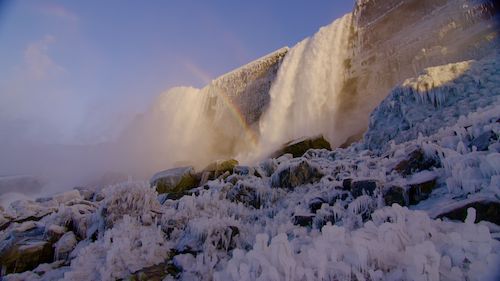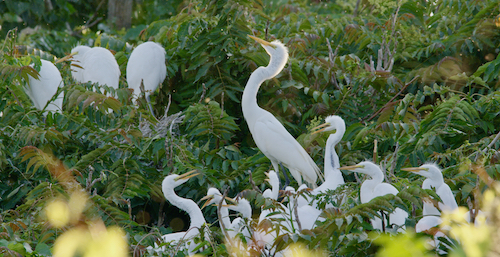Communiqué
Embark to a geological wonder and witness its stunning beauty in “Niagara Falls” on NATURE – May 29 at 8 pm
< < Back to embark-to-a-geological-wonder-and-witness-its-stunning-beauty-in-niagara-falls-on-nature-may-29-at-8-pmNature: Niagara Falls
Wednesday, May 29 at 8:00 pm on PBS, pbs.org/nature, YouTube and the PBS App
Witness the story of an extraordinary ecosystem – larger than the state of Texas, and more precious than oil. The heartbeat of this remarkable water world is Niagara Falls. Through the eyes of passionate scientists and naturalists, uncover a complex world forged by stone and powered by water. In this realm, tiny shrews hunt in freezing cold rivers, spectacular shorebird migration unfolds over thundering falls, snowy owls stalk their prey from ice flows, and prehistoric snapping turtles brave a perilous overland journey. All these creatures and many more are part of a remarkable narrative unfolding in one of the most unique ecosystems in North America – Niagara.

Credit: Joseph Pontecorvo / Courtesy of The WNET Group
Noteworthy Facts:
- Niagara Falls is the largest freshwater ecosystem on Earth, consisting of three falls and powered by four of the five Great Lakes.
- Niagara Falls hosts millions of visitors a year.
- In winter, Niagara has one of the largest and most diverse concentrations of gulls in the world. At least 18 different species of gulls can be found in the region.
Buzzworthy Moments:
- Jenna McGuire, scientific illustrator, guides the way to the Niagara Escarpment. Carved away by glacial meltwater, it is the exposed edge of a fossilized sea that existed around 430 million years ago. At this time, this region was just a few degrees south of the equator and the reef that built it was very similar to the Great Barrier Reef in Australia

Egrets roost along the Niagara River corridor.
Credit: Michael Werner / Courtesy of The WNET Grouptoday.
- A water shrew is a tiny insectivore no bigger than a thumb, yet they have the highest metabolism of any diving mammal. Because of poor eyesight, they must rely on a complex hunting strategy. A shrew scans the surface to detect the slightest break or movement in the water. Then it forages along the bottom, trying to shake loose its prey. When its long whiskers detect movement, it finally chases an unwitting crayfish.
- In winter, the Great Lakes are among the most dangerous waters in the world, with some waves reaching 25 feet or more. Mariners have nicknamed this zone of death and destruction “Graveyard of the Great Lakes”. Yet despite this danger, these waters still attract adventurous surfers.

